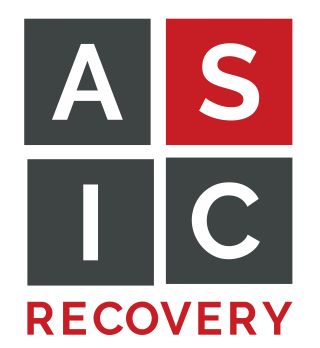Step 4 of Alcoholics Anonymous is a big ask. Here’s the exact wording of the step: “Made a searching and fearless moral inventory of ourselves.” According to the Big Book of AA, this is a step that needs to be started immediately following Step 3.
Step 4 in the AA program is often considered one of the most challenging steps because it requires a deep, introspective look at yourself, something most people (let alone alcoholics and addicts) are willing — or even able — to do.
The goal is to identify your resentments and your fears in two separate lists. Then, you examine your romantic relationships to see where you’ve acted badly. These lists are then used in steps 8 and 9 — many people on these lists are people you’ll owe amends to.
During this process, your sponsor will help you to identify your character defects, which you’ll need to know to complete steps 6 and 7.
It’s not just about identifying problematic behaviors related to alcohol and drugs but about understanding the core personal characteristics that contribute to these behaviors.
After all, if you don’t identify and work on the bad habits that got you into AA in the first place, you’re doomed to repeat your personal history.
Step 4 is a pivotal point in the AA program. It’s the step where you stop looking outside for reasons and start looking inside for answers. It’s a process of self-evaluation, which can be uncomfortable, but it’s crucial for recovery.
As it says in the Big Book when talking about this step and Step 5 (where we discuss this list with our sponsor), without these steps, “we may not overcome drinking.”
One important thing to note is the difference between this step and Step 5. In Step 4, you’re merely writing down some lists. In Step 5, you go over your lists page by page with your sponsor.
The Significance of Step 4 in the AA Program
Step 4 holds a unique place in the recovery process. It’s a transformative step that allows you to face your truths, no matter how uncomfortable they might be.
You have to come face-to-face with your fears, insecurities, and flaws, and then you have the choice of accepting them as part of who you are.
For many people, this is where the rubber meets the road. This is the place where many people stumble — they don’t do Step 4, or they do it halfway, and they end up relapsing somewhere down the line.
This step is not about self-blame or self-loathing but about understanding and acceptance. It’s about acknowledging your past mistakes, understanding why you made them, and accepting them as part of your journey. It’s a crucial step in the process of healing and recovery.
After all, if you want to get better, you have to first understand the problem, what got you to where you are in the first place. The only way to do that is to pick apart your life and look at how you’ve acted and what you’ve experienced.
Step 4 serves as a foundation for the rest of the program. The honesty, introspection, and acceptance cultivated in this step are vital for the steps that follow.
Why You Should Work Step 4 With a Sponsor (Not Alone)
Step 4 is broken down pretty clearly in the Big Book of Alcoholics Anonymous starting on page 64 and going all the way through page 70.
As mentioned, Step 4 can be broken down into three distinct lists — the resentment list, the fear list, and the sex inventory.
However, figuring out exactly what to write and where to write it can be a little difficult because of the way the book is written. It’s not written like an instruction manual — it’s more of a story with instructions woven into the story itself.
There’s a lot of commentary by the authors throughout these pages. They tell you what to write on your resentment list, but then they talk for a bit about the dangers of resentments and how they can cause alcoholics and addicts harm.
There’s nothing wrong with this — in fact, it’s great information that everyone who is working the 12 Steps should learn — but it can make it hard to figure out exactly what you’re supposed to write (and not write).
That’s why it’s so important to work with a sponsor. A sponsor is someone who has been through the steps themselves and who can show you specifically what to write and how to write it.
Even someone who is sponsoring for their very first time will be able to guide you through Step 4 because they’ve already done it. If your sponsor is brand new, their sponsor will likely help you both as you make your way through this step.
Because this step is so important, you don’t want to miss anything. Doing it alone is a very bad idea.
How Exactly to Write and Do Step 4
The following guidelines are taken straight from the Big Book of Alcoholics Anonymous.
The first task is to write your resentment inventory.
The Resentment List of Step 4
A resentment is defined as “bitter indignation at having been treated unfairly.” Resentments can be very big — having a boss fire you for no reason — or they can be very small: someone saying something rude to you on the street.
In this inventory, you are examining 4 things:
- Who or what you’re resentful at
- What they did that makes you resentful
- How it affects you
- Your mistakes
These are usually written in columns on a sheet of paper, but it can just as easily be done on an Excel spreadsheet.
As far as who or what you can be resentful toward, the book gives us 3 options: people, institutions, and principles.
People can include anyone, including family, friends, yourself, strangers, and even public figures.
Institutions are simply organizations of people. Your job is an institution. So is every school you ever went to. Jails, rehabs, hospitals — these all count as institutions too.
To be resentful toward an institution is to be resentful about policies or procedures that they have in place. If you’re resentful at a specific person for something they did, that’s different than being mad about how a policy caused you perceived harm.
A resentment can affect 1 or more of these 7 things: self-esteem, pride, ambition, security, personal relations, sex relations, and pocketbook (money).
Your mistakes are anything you did that caused the situation, that made the situation worse while it was happening, or that caused problems afterward.
For example, stealing from someone who then stole from you is pretty clear — your mistake was stealing from them in the first place.
Sometimes it’s not so clear. If you’re having trouble figuring out your part, ask your sponsor for help.
The Fear List
The fear list is simpler than the resentment list. You’re just answering two questions — what fears do you have, and why do you have them?
This is usually done in a two-column format. It can sometimes be hard to determine why you’re afraid of something, so again, asking your sponsor is a good idea.
The Sex Inventory
This inventory scares a lot of people, but it’s crucial to success. The meaning is literal — you need to write down all the people you’ve had any sort of romantic contact with and then examine how you acted in those relationships.
Here are the questions that you need to answer.
- How was I selfish?
- How was I dishonest?
- How was I inconsiderate?
- Whom did I harm?
- How did I unjustifiably arouse jealousy?
- How did I unjustifiably arouse suspicion?
- How did I unjustifiably arouse bitterness?
- What were my mistakes?
- What should I have done instead?
This is usually written in a 10-column format, and there can often be overlap between the questions. If there is, writing it down one time is more than enough.
Sometimes there’s not much to write for a relationship, especially if it was short. In those cases, just write down as much as you can — it’s okay to leave columns blank if there’s nothing to write there.
The Therapeutic Impact of Step 4 on Personal Growth
Step 4 is often considered therapeutic because of its focus on introspection and self-evaluation. It allows you to understand your negative behaviors, motivations, and emotions better — your character defects.
This understanding can lead to personal growth and a healthier way of dealing with life’s challenges because it shows you what you need to work on.
This step encourages you to confront and work through negative emotions like guilt, shame, and fear. It doesn’t ask you to ignore these feelings but to face them head-on, understand their sources, and learn healthier ways to deal with them.
This process can lead to a significant reduction in stress, anxiety, and depression because you’re finally facing your problems instead of running away. It can also be very freeing to admit things to someone else that you’ve never told anyone.
Step 4 also promotes emotional resilience. As you work through this step, you learn to accept your past, acknowledge your present, and look forward to your future with hope and optimism. This emotional resilience is key to maintaining sobriety and promoting overall well-being.
While it will be difficult at first to see the bad things you’ve done and that have been done to you written down on paper, ultimately, this is the only way to begin healing from them.
Practical Strategies for Writing Step 4
Writing Step 4 can be challenging, but there are things you can do to get through it. One strategy is to take it slow (without procrastinating). Don’t rush through this step — take the time you need to thoroughly evaluate and understand yourself, but make sure you’re not going slow out of laziness or avoidance.
Always make sure to seek support from your sponsor and from other people in the program. You don’t have to go through this step alone. Reach out if you’re struggling. They can provide valuable perspective and encouragement during this challenging process.
Journaling can also be a helpful tool during Step 4. Writing down your thoughts, feelings, and experiences can provide clarity and insight, helping you to come up with resentments, fears, etc. if you’re having trouble remembering them.
Challenges Around Step 4 (And How to Overcome Them)
Like any journey of self-discovery and growth, Step 4 comes with its challenges. It requires honesty, introspection, and acceptance, all of which can be uncomfortable and even painful.
One common challenge is the fear of what you might discover about yourself. It’s natural to fear the unknown, but remember, this step is not about judgment: it’s about understanding and acceptance.
Another challenge is the tendency to dwell on the negative. It’s easy to get caught up in past mistakes and flaws, but remember what the Big Book says — if “if we avoid this vital and crucial step, we may not overcome drinking.”
Finally, many addicts and alcoholics have memory problems. It might be difficult or impossible to remember all the things that have happened in your life, especially if you often drank or used until you blacked out.
In these cases, you just have to do the best you can. It’s not a problem if you can’t remember something — it’s a problem if you deliberately leave something out.
That’s the final challenge — for many people, it’s tempting to keep their deepest, darkest secrets off the list. All this does is make relapse more likely — you’ll be walking around knowing you’re keeping a secret. That guilt will turn into shame that will drive you away from your sponsor and others in the program.
Step 4 Is Worth It
Step 4 is a transformative step that fosters personal growth through honesty, introspection, and acceptance. It can be challenging, but the benefits — both immediate and lifelong — are well worth the effort.
IOP at ASIC Recovery
Are you looking for addiction treatment in Texas? At ASIC Recovery, our Intensive Outpatient Program (IOP) is dedicated to helping you develop healthier coping skills and build a supportive recovery network.



